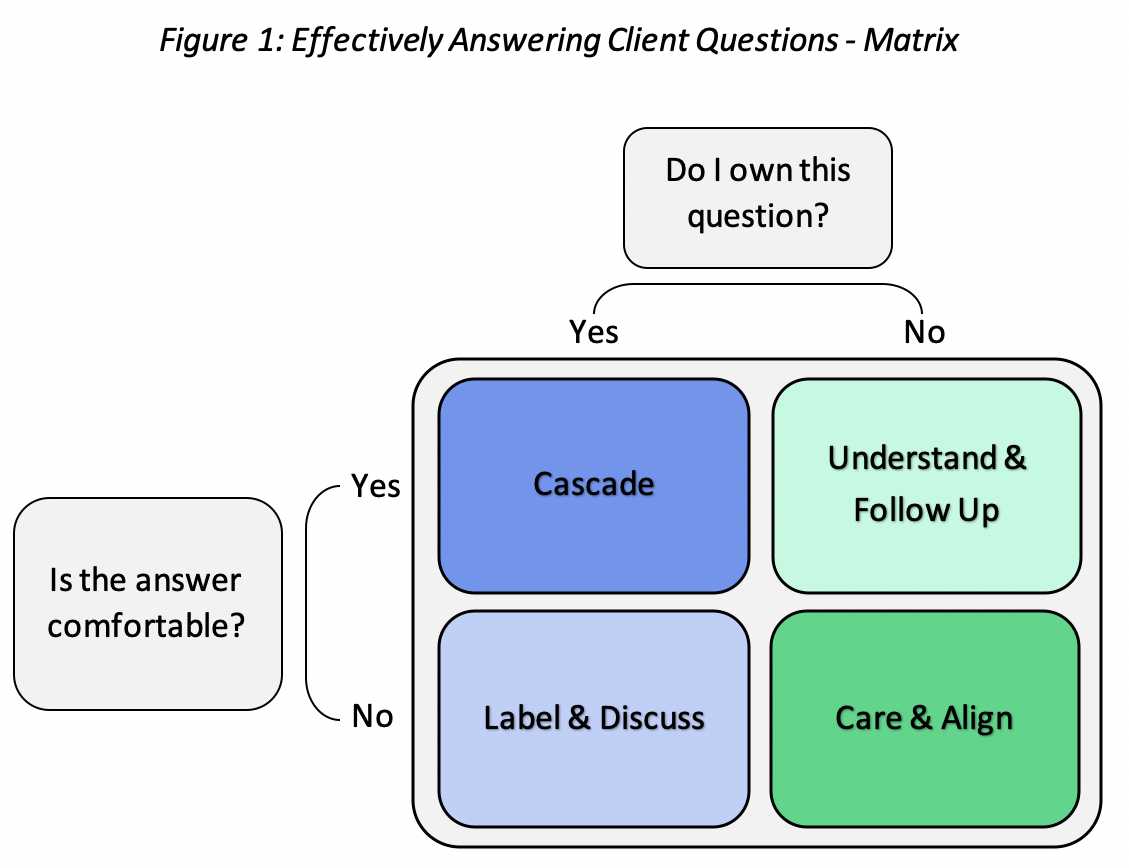Feedback, both positive and constructive, plays a pivotal role in your personal and professional development. That being said, navigating the dynamics of providing and receiving feedback can be very challenging and is something you are always faced with in the world of consulting/professional services. As mentors and managers, one of your primary responsibilities is to provide insights via feedback that enable your consultants to reach their full potential. While offering both types of feedback is crucial, finding the right balance between positive and constructive commentary is an art that must be perfected to ensure the development of your more junior consultants. When done effectively, striking this balance is a great way to keep your consultants motivated and engaged in their personal development. Though we know striking this balance is difficult, (remember, it is an art) there are some specific strategies that you can quickly and easily implement to positively influence the development of the junior consultants at your firm.
Providing Timely Feedback
A key aspect of achieving this balance, is also the most simple and easy strategy to employ; provide feedback promptly. Rather than saving up a laundry list of critiques to be rattled off in a formal annual review, it is more effective to offer feedback and guidance in a timely manner. You could try quarterly, monthly, or even weekly check-ins to ensure that the feedback being provided is relevant to the work being conducted by the consultant. This approach reduces the possibility of overwhelming a junior consultant who is faced with an arduous review process and gives the recipient ample time to process and implement the feedback in a constructive manner. Undoubtedly, this feedback is vital to the professional development of the consultant, but you must also recognize that, at times, it can be challenging to receive. So, how can you be sure that your feedback is being received, and acted upon?
Balancing Positive and Constructive Feedback
For some individuals, taking criticism personally is a hurdle that limits their ability to develop. With that said, can you blame them for not wanting to hear something they did poorly? Not necessarily, and as a mentor, you should acknowledge this sensitivity and emphasize the purpose behind any constructive criticism to ensure that the individual sees that you are looking out for their best interest. If constructive criticism is offered in a poor manner, it certainly leads to a negative impact and can strain the relationship between the two parties. To mitigate any negative impact, it is essential to provide positive feedback in conjunction with areas for improvement. While it may be challenging to remember this in the moment, offering a positive acknowledgment can prevent consultants from feeling constantly targeted and will keep them motivated. Have you ever had some ask you, “Do you want the good news or bad news first?” While you would never want to give feedback in this manner, you can apply that general principle to how you position your comments. Sandwiching, where critiques are mentioned between positive comments, is one of the most effective ways to keep your consultant motivated while also providing input into how they can further develop. No one wants to hear only about what they are doing wrong, but those comments will be better received if the individual feels like you believe in them. The goal in this instance is to create a positive experience, but that is not all on you as a manager or mentor.

Fostering Ownership
Admittedly, the fast-paced nature of consulting work can make it difficult for you to allocate time to provide feedback and guidance to junior consultants. In such cases, an environment should be created in your office where junior consultants feel a sense of ownership in their development and are comfortable asking for feedback directly. This serves as a helpful reminder for you to be more proactive and timely in your feedback-giving approach, while also providing autonomy and giving a junior consultant the responsibility to advocate for their own development. When entering these types of conversations, remember to strike a balance between positive and constructive criticism, while also setting expectations with the junior consultant. Junior consultants must understand the importance of embracing the discomfort of receiving criticism and listen with the intent to understand – 1) why they are receiving the criticism and – 2) how they can implement changes to be better. This is only done if you provide feedback with respect and can show that you are trying to help the individual. This dynamic is a two-way street, and without buy-in, ownership, and trust from both sides, development does not occur. Hearing both positive and constructive feedback is highly motivating, as it allows the consultant to identify areas for improvement and creates an opportunity where you, as a manager, can foster a growth mindset. Again, striking a healthy balance between the two is the key to nurturing growth and fostering ownership over personal development.
Remember, feedback is a powerful tool that drives professional development. By honing your feedback-giving skills and creating an environment where feedback is welcomed, you empower your consultants to achieve their potential. Embracing the art of balanced feedback leads to stronger teams, enhanced productivity, and a culture of continuous improvement, paving the way for collective success.
Written by: Dean McMann
About the Author: Dean McMann is a Founding Partner at McMann & Ransford with 35+ years of experience in consulting and professional services. He is a sought-after expert and speaker on topics of: B2B differentiation, professional services best practices, and overcoming commoditization. In addition to his extensive experience in the Professional Services space, Dean also serves on the board of various non-profit organizations.













